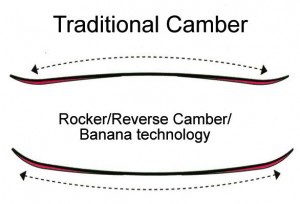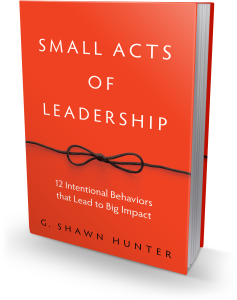Every Big Thing You Have Ever Done Required This
Hello and welcome back to my newsletter! Last week I was musing about ultrarunning Japanese monks. How they can possibly fathom their own astonishing goals? Not to oversimplify it, but basically they don’t. They just take it one step at a time.
This week I’m thinking about how our attention is fracturing. Our eroding focus is not only robbing us of our own big goals, but our loss of attention is making it harder for us, as a community, to collectively solve some of the big problems we face together.
While writing this post, I’ve started, stopped, then started writing again, many times over the past week. I took a break to clean the kitchen, got distracted by a news article on the counter, distracted again attending to the dogs who wanted to come in, then go out again, then my phone rings, then I wonder what to cook for dinner, then forget what I was thinking about, and then start listening to another podcast with Johann Hari, discussing his new book Stolen Focus: Why You Can’t Pay Attention.
At this moment in time, the average office worker focuses on one thing for just 3 minutes, before switching to some other shiny distraction. Often the narrative we tell ourselves is that either we are suffering a personal failure of grit and tenacity, and if only we could muster the discipline, we could maintain our focus. In other words, we tell ourselves that we are failing.
Or we tell ourselves that it isn’t really our fault at all. It’s just the ubiquity of technology and devices which overwhelms our ability to focus. But the truth is that our willpower is no match for an army of engineers focused on designing systems that prey on our limbic brain response. Programming techniques like pull-to-refresh act like a slot machine to keep us “playing” even when nothing’s there. Infinite scroll designs remove natural stopping cues and breaks so users don’t realize when to stop, because there is no end. Which is the point of the design.
“You can try having self-control, but there are a thousand engineers on the other side of the screen working against you.” – Tristan Harris, Center for Humane Technology testifying to U.S. Senate
As Johann Hari points out repeatedly in his book, and interview discussions, we aren’t simply surrendering our attention to facebook, snapchat, tiktok, etc., our attention is systematically, and intentionally being stolen from us. We all know this. On “free” social media platforms, we are the product being sold. We the humans are the commodity being sold to the highest bidder, who again is advertising to us in order to, yet again, steal our attention.
Every click, every scroll, every like and post is scraped by artificial intelligence and algorithms to form a profile of us, which is packaged and sold to advertisers. When Google released Gmail, they were scraping your email content with artificial intelligence to form a profile of you. In order to sell to you. It’s the business model.
— But here’s why this really matters. Here’s why our focus and attention is so critical. —
Think of any major accomplishment in your life – a business you started, a degree you earned, a promotion you worked for, a book you published or a big project you delivered. Or even consider your strong relationships with your partner, your children, your friends and family.
The one single thread among all of these accomplishments and strong relationships is that it required your sustained attention. You had to focus. You had to stay on task, on message, on point. You had to write the content, rehearse the presentation, read the material. And with your meaningful relationships, you had to slow down. You had to listen.
If your attention breaks down you are less able to achieve your goals. Period. Accomplishing anything momentous or valuable, requires your focus and attention.
People who can’t focus, will be drawn to simplistic, authoritarian solutions, and less likely to see clearly when they fail. – Johann Hari
The problem compounds when the task of problem solving requires the collaboration of many people. In this era of distracted, segmented attention, we are less able, as a community, to focus collaboratively on big problems which require the sustained attention of many people.
An example Johann Hari uses is the ozone layer degradation first discovered in the 1980s. Susan Solomon led a series of expeditions to Antarctica in 1986 and 1987 to take readings of the ozone and discovered that a hole was rapidly expanding because of chlorine dioxide being emitted into the atmosphere. The principle culprit was CFCs commonly used in aerosol spray cans, and refrigerants.
Her work expanded the scientific understanding of CFCs and the importance of the protective ozone layer in shielding us from ultraviolet radiation. This was all patiently explained by scientists to global communities of government legislators, business leaders, and consumers. We, common non-scientist people listened, understood the problem explained to us, and then collectively decided to cease use of CFCs and to ban their use in consumer products.
It worked, and since then the ozone layer has been healing to continue to protect species.
Hari worries about our collective ability now to focus on scientific truths, and respond rationally, and in unison, to the realities of climate change, threatened democracy, misinformation, and more.
Hari argues that if we were confronted with the same ozone dilemma now we would fracture in the same ways we do today. As he believes, “You would get people who would film themselves spraying CFCs into the atmosphere to own the libs and make them cry. You would get people saying, ‘How do we even know the ozone layer exists? Maybe George Soros made the hole in the ozone layer.’ We would become lost.”
We would not be able to summon the collective attention required to solve this dilemma that requires critical thinking, sustained attention and collaboration.
How can we solve the world’s most urgent problems if we’ve downgraded our attention spans, downgraded our capacity for complexity and nuance, downgraded our shared truth, downgraded our beliefs into conspiracy theory thinking that we can’t construct shared agendas to solve our problems? This is destroying our sense-making at a time we need it the most.
– Tristan Harris, Center for Humane Technology
Well, if you’ve read this far – even while perhaps checking your email or texts – you must be wondering what to do about it. Johann Hari has a lot of advice and hacks to take back your attention and focus, but I’ll give you just one I use which works.
Do something every day which requires your total attention. Go to an exercise class. Shop and prepare a new recipe. Go for a run. Schedule a coffee with a friend and leave your phone in the car. Engage in an activity which demands your total attention. In other words create situations in which you know you will have total presence. It’s called “pre-commitment”.
Another way to ensure you won’t check your DMs and likes is to lock up your phone. Seriously. Grab yourself a K-Safe and set the timer. The research backs it up. You’ll have your focus back for that duration.
Here, just for you, have a micro-learning course we recently published on Being an Agile Critical Thinker.
_________________________________________

My book Small Acts of Leadership, is a Washington Post bestseller! You can grab a copy now.
And if you want to learn to apply some of these ideas and be an effective coach for your team, we wrote a course on that too. It’s called Coaching for Managers available over at UDEMY for Business.



 Shawn Hunter is President and Founder of
Shawn Hunter is President and Founder of 
 Shawn Hunter is President and Founder of
Shawn Hunter is President and Founder of